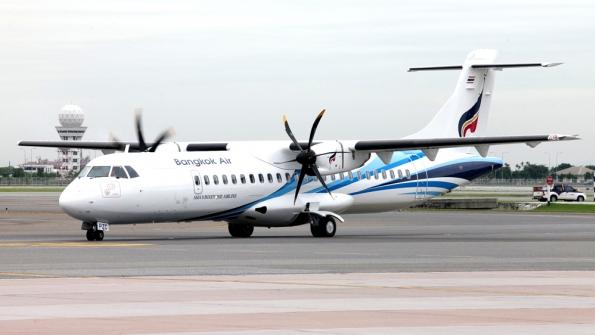
As most MROs are seeing empty production lines, laying off staff and trying to conserve cash, it’s heartening to see one that is actually launching a new product.
That would be Sweden’s Täby Air Maintenance, or TAM, which has now welcomed its first ATR72 into workshops at Örebro Airport.
The MRO is optimistic about the long-term prospects of the popular turboprop, an optimism that is shared by neutral market analysts.
TAM will offer a full range of support for the ATR 72 family of regional airliners, along with existing support for Saab 340s and 2000s. “This is the dawn of a new era for us,” says Pär Gulle, TAM’s managing director. “Saabs will be flying for decades to come, but by adding the ATR72 to our customer offering, we have ensured we will remain a natural choice for any operator of regional airliners that needs qualified maintenance, repairs and modifications.”
Gulle sees solid and increasing future demand for ATR maintenance in Northern Europe and predicts that the ATR family will be the leading regional airline aircraft of the future. “Hence, it is a natural step for us to add that aircraft to our service portfolio.”
The TAM exec acknowledges that it is difficult to guess when demand for ATR maintenance will fully recover from the current virus crisis. “However, given what we already can see, we are confident that demand for qualified service and technical support will be back on a commercially healthy level within the next 12-18 months, well before the end of 2021.”
Looking further into the future, Gulle says cargo conversions of ATRs by TAM are also possible. “We are evaluating that. With the know-how we have from doing numerous Saab 340 cargo conversions, I’d say a cargo conversion package for the ATR would be a natural next step after the Saab 340.”
IBA President Phil Seymour expects regional aircraft, including both regional jets and turboprops, to recover soonest from the current slowdown, because domestic and regional routes will be opened up first. And turboprops generally fly shorter routes than RJs, so a cautious opening should favor this type.
Among turboprops, IBA Head of Valuation Mike Yeomans notes that ATRs still dominate orders and deliveries, with 68 ATRs delivered in 2019, though fewer will be taken this year due to coronavirus.
And ATRs have been less endangered by airline failures or re-fleeting plans than Bombardier models. A total of 95 DHC8s are set for removal from fleets due either to bankruptcy or replacements, versus only 14 ATRs, at least at present.
Moreover, a good measure of how soon the market expects aircraft to be back in service, and how long it expects this service to last, is the decline in value due to the crisis.
IBA estimates that three-year-old ATR72-600s have lost only 8% of value during the traffic crash, versus 18% for DHC8-400Qs of the same vintage. For 12-year-old 72-500s, IBA puts the decline at 14%, versus 25% for a comparable -400Q.
